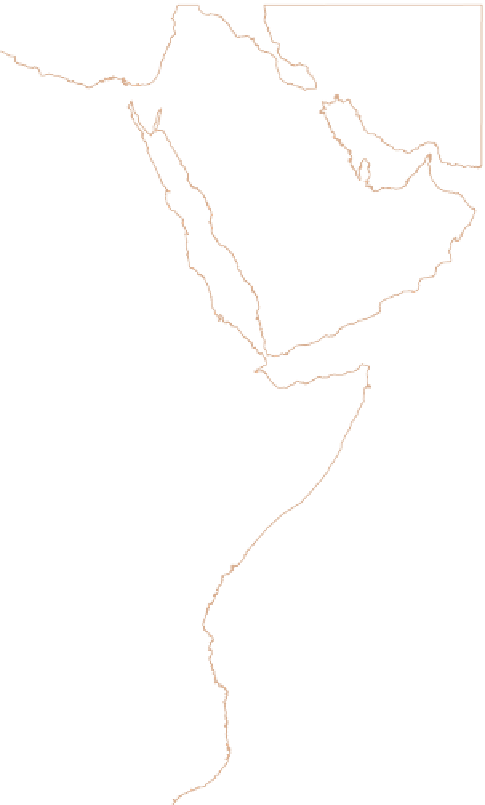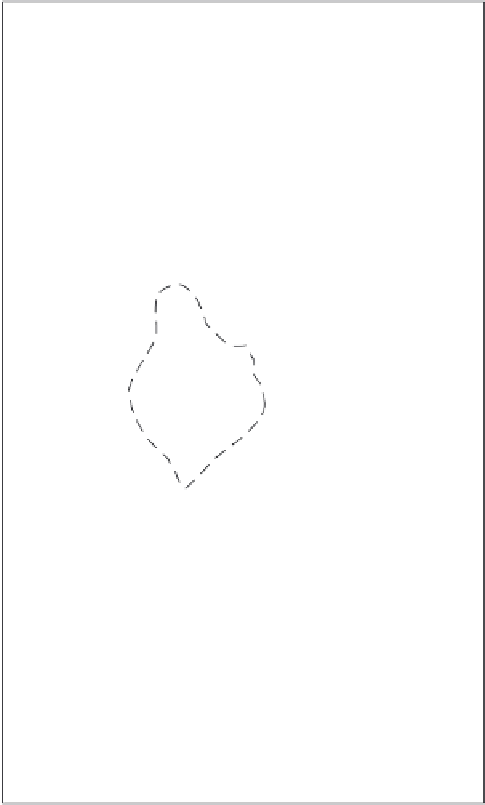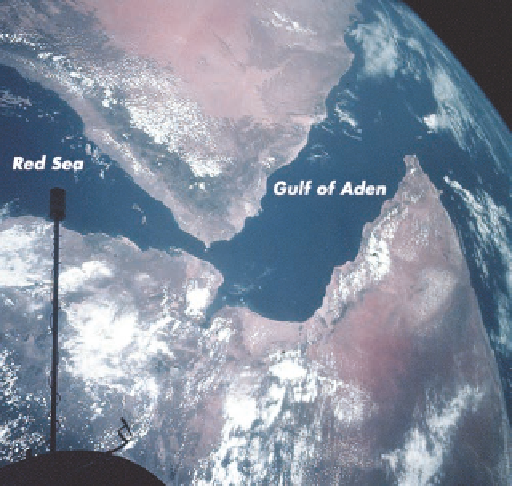Geoscience Reference
In-Depth Information
0
1,000 km
0
500 mi
Arabian
Peninsula
(b)
Ethiopian
highlands
Somalia
Lake Turkana
0°
Mt. Kenya
Lake
Victoria
Indian Ocean
Mt. Kilimanjaro
East African
Rift
System
Lake
Tanganyika
Madagascar
Lake Nyasa
(a)
(c)
Figure 13.9 The Great Rift system in eastern Africa and the Middle East.
(a) Map showing the various components of the East African
Rift system. (b) The Suguta Valley in Kenya is part of the East African Rift; note the steep bluffs bordering the valley. (c) Satellite image of
the triple junction with view to east/southeast. The Red Sea is to the upper left, the Gulf of Aden is to the upper right, and the East African
Rift is in the foreground.
of continental plate divergence is in eastern Africa where the
East African Rift is located (Figure 13.9a). Continental rift-
ing in this area has produced a distinct valley landscape bor-
dered by steep canyon walls (Figure 13.9b), as well as several
large lakes such as Lake Victoria (Figure 13.9a). In the north-
ern part of the rift zone, plate divergence is occurring in three
places that merge at a single place known as a
triple junction
(Figures 13.9a and c). This junction is in close geographic as-
sociation with the Arabian, African, and Indian plates. Two of
the rifts are oceanic, with one opening the Red Sea and the other
causing enlargement of the Gulf of Aden on the southern side
of Saudi Arabia. On land, the third rift, the East African Rift,
extends in a southerly direction from the juncture of the Red
Sea and the Gulf of Aden. Along this rift, the eastern part of the
African continent is slowly splitting in two, resulting in several
large lakes, such as Lake Victoria.
Plate Convergence
Having just seen what happens when plates diverge from one
another at rift zones, let's turn now to the places where two
plates collide directly into each other in a process called
plate
convergence
. Plate convergence occurs in three general set-
tings, including (1) oceanic crust to continental crust, (2) oce-
anic crust to ocean crust, and (3) continental crust to continent
crust. The type of convergence associated with each of these
settings results in specific processes that produce distinctive
landforms on the Earth's surface.
Collision of Oceanic Crust with Continental Crust
The
first type of plate collision discussed occurs when two plates
collide, one consisting of oceanic crust and the other of conti-
nental crust. Recall from Chapter 12 that oceanic crust is gener-
ally denser than continental crust because oceanic crust consists










































